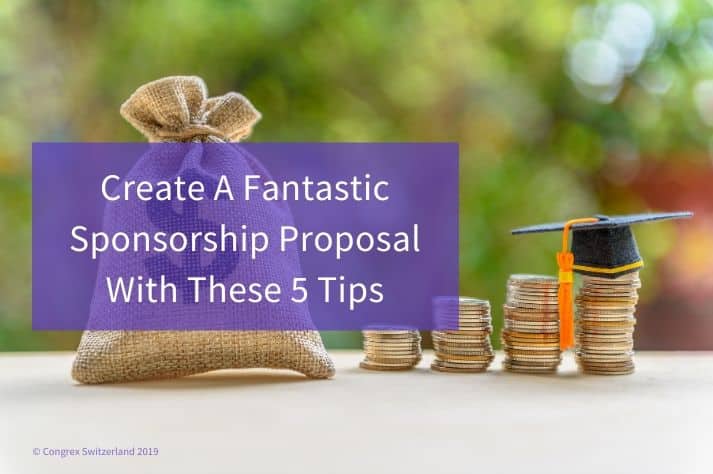The events industry keeps going from strength to strength. But with growth comes increased competition, which can make it harder for organisations to secure event sponsorships. As the market evolves, so do sponsor and attendee expectations. All this is accelerated by the rise of technology and its application to conference and event planning. A recent report found that nearly 50% of event planners said the second most challenging part of their job was related to event sponsorships. In this post, we discuss how to create a sponsorship proposal that stands out as a fantastic sponsorship opportunity and delivers the desired event ROI.
RELATED: Six Ideas For Creating A Standout Event Sponsorship Proposal
1. Data-Driven Sponsorship Proposal
In the past, the promise of increased exposure or visibility of the sponsor’s logo was all that event managers needed to attract high-profile sponsors. Nowadays, we need to get more granular with data-driven event sponsorship packages that show a high-level overview of the benefits involved in sponsoring your event. Gathering web analytics months before submitting the proposal can help collect crucial data that will solidify the proposal. At the very least, this should include:
- Demographic data: event attendee location, age, job title, income, and any other data that can ensure a good fit.
- Results of previous event marketing campaigns, including email click-through rates, conversions, event website traffic, average time spent on website pages, registration sales, and any media coverage.
- Event performance on social media: mentions, attendee engagement rates, number of followers, direct messages, etc.
Research shows that up to 50% of planners don’t have a standardised way of collecting and analysing event data, so this is an excellent opportunity to stand out from the rest!
RELATED: How Event Sponsorship Benefits Your Business
2. Beyond The Sponsorship Agreement
As most meeting professionals know, event planning doesn’t end with the last keynote lecture. The same applies to the organiser’s relationship with the sponsor. To make your sponsorship proposal stand out, it can help to include the actions you plan to take to reinforce the sponsor’s brand and presence after the event. “Go the extra mile”, for example by writing post-event blog posts or notes in social media focusing on the sponsor’s role, products or services, interviews with decision-makers at the sponsoring company. Or anything that adds exposure. This will highlight that you’re committed to making genuine efforts to offer a sponsorship package that has the sponsor’s best interests in mind.
3. Embed ROI Into A Narrative
Although relationship building and brand recognition are important to sponsors, potential ROI is a decisive consideration when deciding whether to sponsor an event. Merely stating the figures isn’t enough, so build ROI into a narrative that contextualises the financial benefits and connects them to the bigger picture. You can do this by including case studies in the proposal, explaining how it was a successful event both for conference planners and sponsors. It can also be effective to bring in any comments or feedback from attendees about how the sponsor’s offerings met their expectations or added value to their experience.
RELATED: The Importance Of A Carefully Planned Exhibition And Sponsorship Strategy
4. Integrated Event Technology
Event apps are a must-have for planners. You can go a step further by integrating the app’s functions, so they serve the interests of your sponsor and allow them to interact directly with attendees. This can be a valuable addition as sponsors can get access to real-time data about their target audience and gather a wealth of information that can create better leads. Integrated event technology can also be built into tier sponsorship, by customising visibility or features and prioritising those linked to premium tier packages.
5. It’s All About Personalisation
Research the sponsor’s current goals and emphasise how the event will help them reach those objectives. The proposal should be written, so it answers the question “what does the sponsor want?”. In a previous post, we discussed that the sponsors’ goals could vary depending on whether it’s a company sponsor (who may be interested in testing products or selling services), or an educational/third sector sponsor, whose objectives may range from raising awareness, publicising social responsibility initiatives, or building relationships.
RELATED: Four Ways Of Increasing The Success Of Conference Sponsorship
Conclusion
To successfully sell a sponsorship, the first step is creating a solid sponsorship proposal that’s rich in data and contextualises ROI within a convincing narrative. The proposal should also outline how you plan to continue building a relationship with the sponsor after the event and help them achieve their goals. At Congrex we can help you fine-tune the details of outstanding sponsorship proposals – get in touch to learn more!




